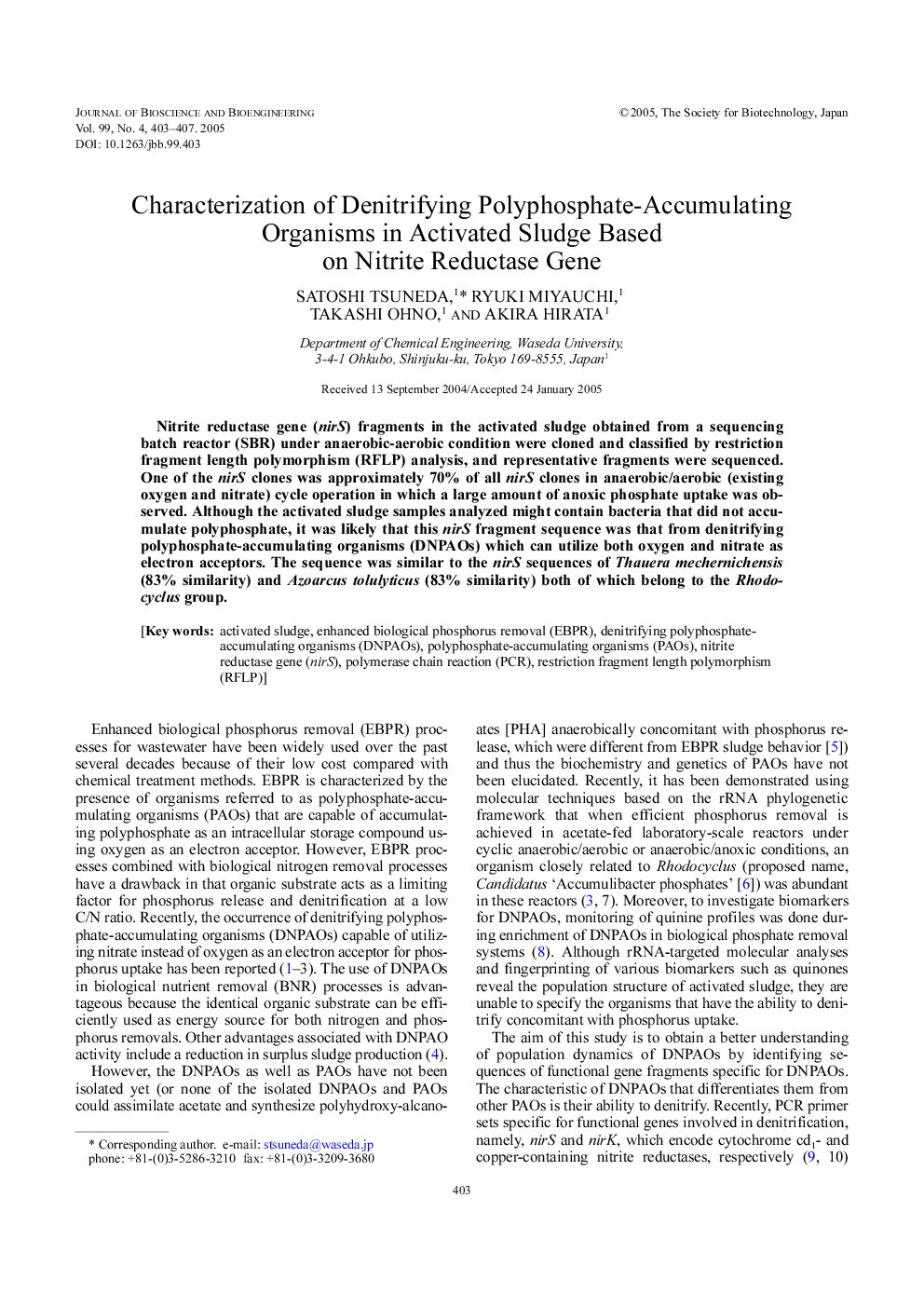| Article ID | Journal | Published Year | Pages | File Type |
|---|---|---|---|---|
| 9603239 | Journal of Bioscience and Bioengineering | 2005 | 5 Pages |
Abstract
Nitrite reductase gene (nirS) fragments in the activated sludge obtained from a sequencing batch reactor (SBR) under anaerobic-aerobic condition were cloned and classified by restriction fragment length polymorphism (RFLP) analysis, and representative fragments were sequenced. One of the nirS clones was approximately 70% of all nirS clones in anaerobic/aerobic (existing oxygen and nitrate) cycle operation in which a large amount of anoxic phosphate uptake was observed. Although the activated sludge samples analyzed might contain bacteria that did not accumulate polyphosphate, it was likely that this nirS fragment sequence was that from denitrifying polyphosphate-accumulating organisms (DNPAOs) which can utilize both oxygen and nitrate as electron acceptors. The sequence was similar to the nirS sequences of Thauera mechernichensis (83% similarity) and Azoarcus tolulyticus (83% similarity) both of which belong to the Rhodocyclus group.
Keywords
Related Topics
Physical Sciences and Engineering
Chemical Engineering
Bioengineering
Authors
Satoshi Tsuneda, Ryuki Miyauchi, Takashi Ohno, Akira Hirata,
